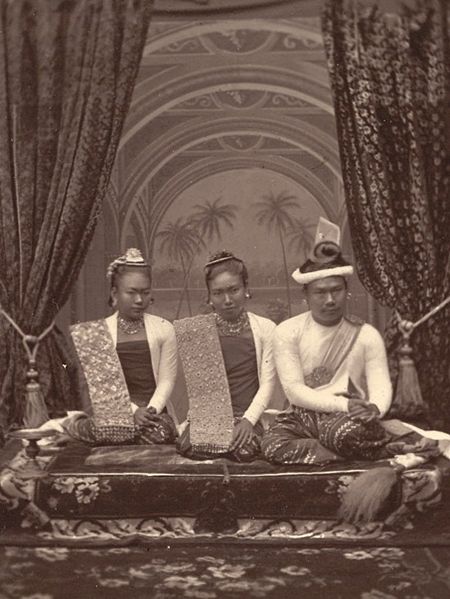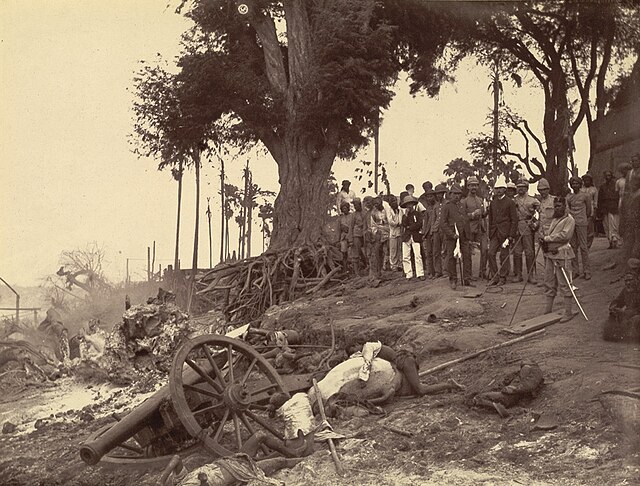The Third Anglo-Burmese War, also known as the Third Burma War, took place during 7–29 November 1885, with sporadic resistance continuing into 1887. It was the final of three wars fought in the 19th century between the Burmese and the British. The war saw the loss of sovereignty of an independent Burma under the Konbaung dynasty, whose rule had already been reduced to the territory known as Upper Burma, the region of Lower Burma having been annexed by the British in 1853, following the Second Anglo-Burmese War.
The nominal surrender of the Burmese Army, 27 November 1885, at Ava.
Junior Queen Supayalay next to Queen Supayalat and King Thibaw (November 1885)
Minhla, after its capture by the British, mid-November 1885, showing death and devastation. Photographer: Hooper, Willoughby Wallace (1837–1912).
Photograph of one of King Thibaw's steamers on the Irrawaddy, 26 November 1885. Photographer: Hooper, Willoughby Wallace (1837–1912).
The Anglo-Burmese Wars were an armed conflict between two expanding empires, the British Empire and the Konbaung Dynasty, that became British India‘s most expensive and longest war, costing 5–13 million pounds sterling and spanning over 60 years. There were three Burmese Wars or Anglo-Burmese Wars:First Anglo-Burmese War
Second Anglo-Burmese War
Third Anglo-Burmese War (1885)
Photograph of surrender of the Burmese Army, 3rd Anglo-Burmese War




